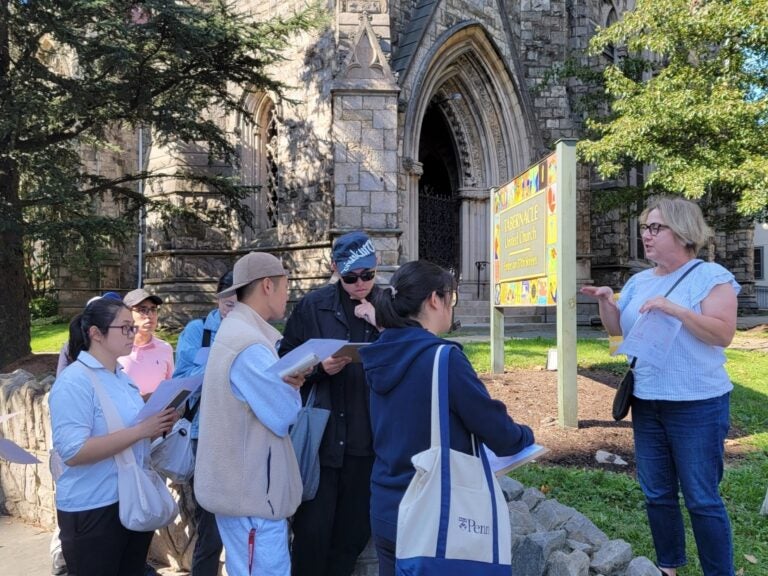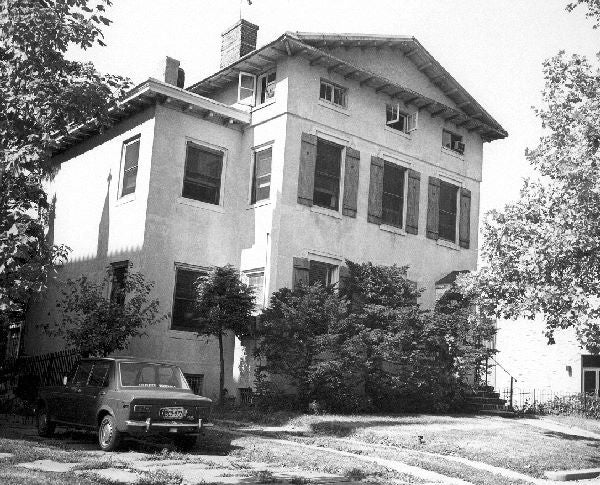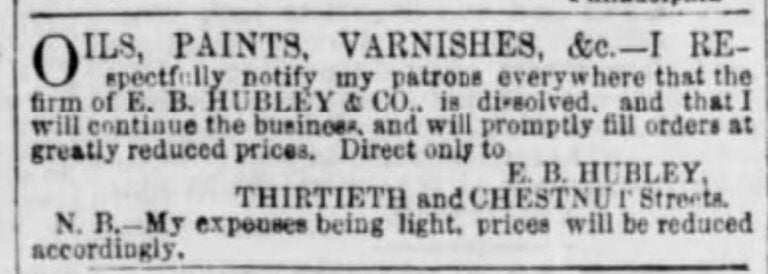Ke-An Chiang (MSHP’25), uncovered the 250-year history of the Greenfield Intercultural Center at 3708-12 Chestnut Street, which served several families as a suburban villa before being acquired by the University in 1982.
The building that houses Penn’s Greenfield Intercultural Center has been listed on the Philadelphia Register of Historic Places, thanks to a nomination authored by Ke-An Chiang, a Master of Science in Historic Preservation (MSHP) student at Weitzman.
Built circa 1845, the Reed-Hubley Residence, a 3-story villa at 3708-12 Chestnut Street, is believed to be the oldest building owned by the University of Pennsylvania, outside of Hospital properties.
Chiang conducted original historical research for the nomination in the Fall 2023 semester of HSPV 6000 Documentation, Research, and Recording I, taught by Francesca Ammon, associate professor of city and regional planning and historic preservation; Kecia Fong, senior lecturer in historic preservation; and the late Aaron Wunsch, an associate professor of historic preservation.

The instructors then passed Chiang’s final paper on to Amy Lambert, a preservation alum from 2016 who serves as the president of the board for the University City Historical Society (UCHS). UCHS sponsored the nomination for submittal to the Philadelphia Historical Commission, which voted unanimously to designate the property on March 15.
Ke Feng (MArch’98), senior architect in the Office of the University Architect, spoke at the Historical Commission meeting on behalf of the University. “We’re very happy and grateful for this nomination,” he said, “so we support that designation to the Philadelphia Register of Historic Places.”
Site designation is one of the fundamental tools of historic preservation at the local, state, and national levels. Nominations document the historic significance of their subject property and, if approved, can afford those properties protections going forward.
Developing historical arguments for the significance of sites is the core of the Documentation I course. In her nomination, Chiang argues that the structure merited designation because it stylistically reflects a suburban aesthetic preference during a rapidly industrializing period, and exemplifies the moment Greek Revival architecture began to turn toward the Italianate.
Further, she argues that it is emblematic of the changing social history as the area developed as a “streetcar suburb” in the late 1800s, a new urban form enabled by the burgeoning technology of the rail-born horse-drawn streetcars. Chiang combined original deed research at the City Archives with historic newspapers to craft a narrative about the people who occupied 3708 Chestnut.

“I live on Chestnut Street, so I saw that building a lot,” Chiang remembers. “But I never thought that I could dig into the history so much and find an argument for the building. I did have fun in putting all these together.”
“Documentation I is a foundational course for all historic preservation students,” notes Ammon. “Whether they intend to focus on materials-based conservation, adaptive or new designs in historic settings, preservation planning, or the public history side of the field, our graduates will all need to know how to research the history of a building, site, or neighborhood. This course equips them with the archivally-based research skills to establish that starting point.”
Each year, course instructors select a focus neighborhood in Philadelphia. 2023 students’ properties clustered around Spruce Hill, a West Philadelphia neighborhood with the largest intact collection of Victorian architecture in the country.
In addition to the excess of historic character, the neighborhood selection was strategic in its timing: that October, Spruce Hill Civic Association (SHCA) submitted an historic district nomination for the third time in almost four decades. In July 2024, the Southeast Spruce Hill Historic District, nominated in partnership with UCHS, was designated to the local Register, safeguarding all properties within its boundaries from demolition.
Most of the other HSPV 6000 students’ properties will likely be protected under the auspices of this or a further three proposed historic districts within Spruce Hill. 3708 Chestnut is not within those boundaries and held the potential for designation based upon its individual significance. The property therefore warranted an individual nomination.
Wunsch, a former resident of Spruce Hill, knew about the neighborhood’s upcoming designation effort, which was launched in response to increased demolition and gentrification to the north.
Ammon explains, “Aaron had been keeping a running list of buildings in the area that could possibly merit designation based upon their architectural significance. As our students dug into these properties, however, they oftentimes uncovered meaningful social and cultural stories that went beyond architecture alone, demonstrating the many rich layers of history embodied in the built environment all around us.”


